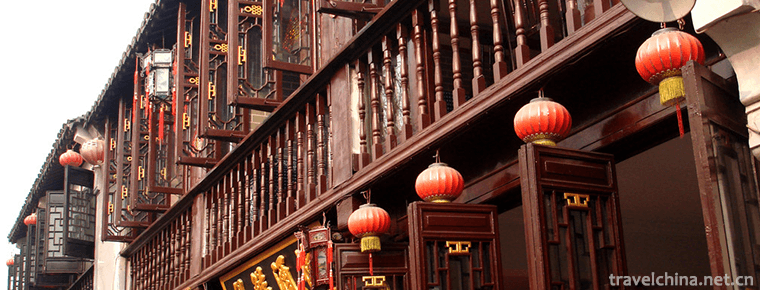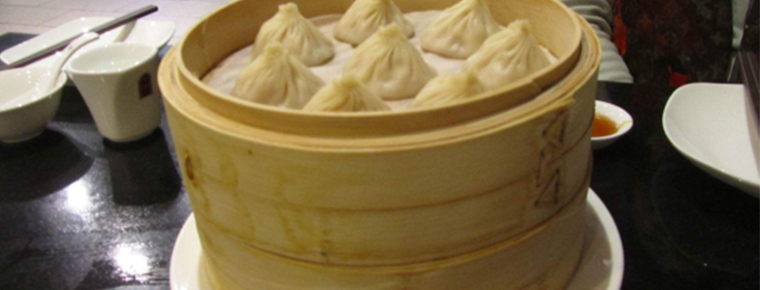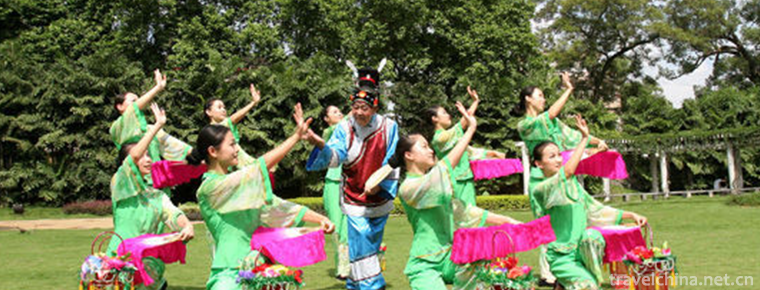Chess Xiangqi
Chess Xiangqi
Chess, also known as "Chess", Chinese chess (English name Chinese chess), Chinese traditional chess puzzle game, has a long history in China, belongs to a two-person confrontational game, because of its simple appliances, interesting, has become a very popular chess art activities. Chinese chess is not only the Chinese chess culture, but also the cultural treasure of the Chinese nation.
Chess is mainly popular in Chinese and Chinese culture circles. Chess is one of 78 sports that China has officially launched. It is one of the formal events of the first World Intellectual Games. On May 20, 2006, chess was listed in the first batch of national intangible cultural heritage list with the approval of the State Council.
History
origin
Origin controversy:
The origin of chess is a very complex and difficult problem. The reason is that chess has undergone many evolutions before its finalization. Chess was once called "Xiangxi". According to unearthed cultural relics and documents, Chaturanca developed into Sartranz when he was the elder of Persicus. It was introduced into China through the Silk Road into Chengbei Zhou Xiangxi, Baoying Chess in Tang Dynasty, and finally Chinese Chess in Song Dynasty. Some Soviet scholars published articles in an attempt to refute the Indian origin theory. In 1972, Yugoslav historian Bijiv's book Chess - Symbol of the Universe concluded that chess first appeared in China in 569 A.D. and then gradually spread. But it later proved that Bijiv was wrong because the earliest chess game, Chaturanca, was recorded and unearthed in Indian literature three centuries ago. Yan Shu's Leiyao recorded that chess was introduced into China in the early years of Wei and Huang dynasties. The form of chess is constantly changing. Indian origin theory is still the dominant theory in the world. Chinese chess has a long history. Ancient "Yi" was originally "Xiang Jing" or "Yi Jing under the hexagram", but it has not been passed on. However, in the Qing Dynasty's "Yi" works, its inheritance track can still be seen up to now. During the Northern and Southern Dynasties, Emperor Wudi of the Northern Zhou Dynasty made the Chess Classic (Chess Classic). Yu Xin, a writer, wrote Chess Classic Fu and Jin Chess Classic Fu. It shows that chess has had a widespread influence in all walks of life at that time.
The word "Xiangxi" first appeared in the four years of Emperor Wudi of the Northern Zhou Dynasty. According to Zhou Shu Benji, it is recorded that "Tianhe four years, the ugly second month of May, the imperial"Xiangjing"was completed, and it was told by Bailiao." This was regarded as a great event in the Northern Zhou Dynasty, and it was really lively. Many scholars believe that according to the reliable records of ancient books, chess
It was popular during the Warring States Period. In addition to the above quotation of "Qianzhen Ju Lei Shuo Yuan Shan Shuo", Han and Liu also recorded Meng Xianjun's chess playing in the Warring States Period: "Meng Xianjun in Yongmen Zhou Diao, while playing Yan is fighting chess, and also fighting." There are also sentences in the Warring States Period's work "Chuci Zhao Soul", which are "covert chess, with six thin points". All these show that chess has become a regular activity in the Warring States Period. Therefore, some scholars believe that chess came into being before the Warring States Period. But when did "Qian" arrive? Some people think that it can be pushed up to the Spring and Autumn Period, and that chess was produced by imitating the military system at that time. Their basis is that the "image" of chess is the meaning of "symbol" and has nothing to do with animal images. For example, dancing symbolizes fighting, which is called "elephant dance", while playing chess symbolizes fighting, which is called "chess". The names of chess pieces are also derived from the symbols of different arms. This situation coincides with the military system of the Spring and Autumn Period, namely, handsome, chariot, horse, soldier, soldier and soldier. Therefore, chess originated in the Spring and Autumn Period is in line with the historical situation at that time. However, some scholars disagree with this statement and consider Bi Jing as a corollary.
The development of chess can be divided into seven periods: gestation period, childhood period, contention period, climax period, mid-ebb period, peak period and steady period. Legend has it that its originator was Boyi, a chess player with six boxes. Divide into Cao and chase each other. Cheng Wu and Mou, call for five days. Kun is the jade, Liu Bo is also Kun Jiao chess. The word "chess" refers to the Six Bos. Of course, the form of chess is totally different from that of Six Bo. Six Bo is a kind of game in which chess is won by playing chess, while chess is a competitive sport relying on wisdom, technology and self-cultivation. Because of the relationship between Liubo and later Chinese chess, the birth of the word chess gave birth to the generation of Chinese chess in the future. Therefore, the period from the birth of Chinese chess nouns to the time before Emperor Wudi's writing of "The Book of Chess" in North and South Zhou Dynasty was called the gestation period of Chinese chess.
The Warring States
During the Warring States Period, there was already a name for chess, but it refers to the six chess pieces made in ivory, such as: there are six books of chess in Chuci Zhaosou; Cao went hand in hand and forced each other; Cheng Wumou and Hu Wubai. "Shuoyuan" contains: Yongmenzi Zhou Yiqin meets Meng Xianjun and says, "You are the king of thousands of times,... Yan plays chess while Zheng Nv dances. It can be seen that in the Warring States Period, the Six Bos were popular among the aristocratic class. Six Bodang came into being in the clan areas of southern China around the founding of the Zhou Dynasty (11th century BC). Chess system consists of chess, chops and games. Two sides play chess, each side six pieces, it is said that the types of chess pieces are: Owl, Lu, pheasant, calf, plug (two). However, ancient cultural relics prove that the six chess pieces are not multi-arms, which is due to the mistake of confusing the Miaopu. Miaopu, Lu, pheasant, calf and stopper are the arrangement and combination of the Miaopu throwers, not the arms. Chess pieces are carved in ivory. Chop, equivalent to dice, must be cast before chess. The game is a square chessboard. Six Bo is "throwing six choices and playing six chess", fighting wit and pressing each other to win more games, which is different from the chess of eating king, and has no evolutionary relationship. Just as Qiu Chuji and Wu Chengen both wrote Journey to the West with the same name, Liu Bo and Chinese chess had the same title.
Qin and Han Dynasties
Later, a kind of chess game called "Sai" appeared, but it had nothing to do with chess. During the Qin and Han Dynasties, the Saixi Opera was very popular, which was also called "Gewu" at that time. From the chessboard of Sai Opera unearthed from Yunmeng Western Han Tomb in Hubei Province and the colored wooden figurines of Sai Opera unearthed from Mozuizi Han Tomb in Wuwei, Gansu Province, the description of Sai Opera in Bianshao Sai Fu of Han Dynasty can be demonstrated. There is no evolutionary relationship between the rules, pieces and chess board.
Northern Zhou Dynasty
Chess games were first called iconic games, which came from the Northern Zhou Dynasty and meant symbolic games. In the Northern Zhou Dynasty of the Northern and Southern Dynasties, Emperor Wu (in power from 561 to 578 A.D.) made Xiangjing, Wang Bao wrote Xiangxi Preface, and Geng Xin wrote Xiangxi Jingfu, which marked the completion of the second major reform in the form of chess. Later Zhou Wudi compiled Xiangjing according to chess at that time, which had the image of sun, moon and stars. The name of Xiangxi came from it and was called Xiangxi in Northern Zhou Dynasty. Later, Baoying chess in Tang Dynasty evolved in the form of eight times eight black-and-white chessboard and three-dimensional shape of chessboard. Buddha Tongzai, Volume 22 of Shi Min Chang's "Buddha Tongzai", contains "It's different for people to start with cars, horses, generals, dead on behalf of the sun, the moon, stars and stars. It's like a monk and a monk.
Sui and Tang Dynasties
During the Sui and Tang Dynasties, chess activities were carried out steadily and frequently recorded in historical books. Among them, the most important is a story about Cen Shun dreaming about chess in the first year of Baoying (A.D. 762) in Niu Mongju's Xuanguo Lu. Combining the four patterns of "Qin, Chess, Calligraphy and Painting" which can be seen in the early Northern Song Dynasty, the Suzhou Brocade, which is represented by a chessboard of eight squares multiplied by eight squares of light and dark, and the copper chessboard with pictures on the back unearthed from Kaifeng, Henan Province, we can draw the conclusion that the chessboard form of Tang Dynasty is quite similar to that of early chess. Place. The popularity of chess at that time can be seen from many records in poems and legends. The three volumes of chess score "Qiao Bo Xiangxi Ge" may be the works of the Tang Dynasty.
The claim that Wu Zetian dreamed of playing chess with Daluo Tiannu was based on a false report. According to the Sixth Advice, Di Renjie's Biography, Tianzhong Ji and Yuanjian Letter in Tang Dynasty's History Supplement, Song and Yuan Dynasty's vernacular novel Liang Gong Jiujian, Wu Zetian dreamed of playing double-land chess. Queen Wu asked Di Renjieyun: "I had a dream last night with people on both sides of the land, often invincible, what is it?" He said to him, "It is God's will that the two land transporters should be built up as childless in the palace. If this is to show your majesty, how long can Anke be empty? "
Song dynasty
Modern chess styles were not formulated until the Song Dynasty. Cheng Hao, a Neo-Confucianist of the Song Dynasty, wrote a poem chanting chess: "Most of the games are dramas, like dramas, they can learn to use troops. Zhou's tricks still exist in the carriages and horses, with both God and Han official names. Eight generals of the Chinese Army are heavy, but the sharp and oblique pawns outside the river are light, but they laugh at themselves with sadness, like Liu Xiang, they also argue idly. He did not mention artillery in his poems. Artillery was the last weapon to join. Of course, it was only after the Chinese invented gunpowder and firearms that they were reflected in chess. The Song Dynasty was a time when chess was widely popular and the shape of chess changed greatly. In the Northern Song Dynasty, Sima Guang's Seven Countries Elephant Opera, Yin Su's Elephant Opera Ge, Chess Posture and Chao Buzhi's Guangxiang Opera Map were published successively. Elephant Opera was also popular among the people.
In the Northern Song Dynasty, there were both big and small chess operas, all of which had artillery pieces. The small chess opera is a modern form of chess, with 32 pieces. The size of the board is set at 10 vertical roads and 9 horizontal roads. The general stays in the center of the Ninth Palace without a scholar. After that, chess became more popular, and many scholars loved to play chess. Chess players became a profession.
It was not until the Southern Song Dynasty that the word chess began to refer to Chinese chess. In the Southern Song Dynasty, Xiaoxiang Opera had become a form of chess. The generals stayed at the bottom of the Ninth Palace, and there were already scholars. In Chen Yuanqiang's Shilin Guangji, the earliest two complete chess games and the oldest one, "Erlong going to sea" are recorded.
After nearly a hundred years of practice, chess was finalized into a modern model in the late Northern Song Dynasty: 32 pieces, one general (commander) in black and one red chess, two in carriage, horse, gun, image (image), scholar (official) and five in soldier (soldier). In the Southern Song Dynasty, chess became a very popular chess art activity. Li Qingzhao, Liu Kezhuang and other writers, Hong Zun, Wen Tianxiang and other politicians, all like to play chess. Chess players accounted for more than half of the "chess pending edict" set up by the court. There are professionals known as "chessmen" and craftsmen who despotize chess pieces and chessboards among the people. In the Southern Song Dynasty, Hong Mai's Chess Classics, Ye Maoqing's Chess Magic Machine Collection, Chen Yuanqiang's Shilin Guangji and other chess writings appeared.
Yuan, Ming and Qing Dynasties
During the Yuan, Ming and Qing Dynasties, chess continued to be popular among the people, and the technical level was constantly improved. A number of summative theoretical monographs appeared, among which the most important ones were Dream Enchantment, Jinpeng Eighteen Changes, Orange Secret, Taste and Elegance, Plum Blossom Spectrum, and Bamboo Xiangzhai Chess Spectrum. Yang Shen, Tang Yin, Lang Ying, Luo Jie, Yuan Mei and other scholars are fond of playing chess. The emergence of a large number of famous chess players shows that chess is popular among people from all walks of life.
Establishment of New China
After the founding of New China, chess has entered a new stage of development. In 1956, chess became a national sport. Since then, national competitions have been held almost every year. In 1962, the Chinese Chess Association, a subordinate organization of the All-China Sports Federation, was established, and corresponding subordinate associations were established in various places. Over the past 40 years, due to the promotion of mass chess activities and competitions, chess skills have improved rapidly, and excellent chess players have emerged. Among them, Yang Guanlu, Hu Ronghua, Liu Dahua, Zhao Guorong, Li Laiqun, Lu Qin and Xu Yinchuan are the most famous.
The world's four major chess categories (Go, Chinese chess, chess, general chess) are all related to the country's political system. The political system reflected by chess is China's feudal society, and it is almost a microcosm - there are Chinese military accounts (Ninth Palace), scholar ranks (scholar, official), civil officials (that is, Chinese chess image, phase, not allowed to cross the river), military generals (car, horse, artillery), soldiers (soldiers, soldiers).
In order to promote the popularization and promotion of the project worldwide, on February 23, 2009, according to the official approval of the National Sports Administration of the Chess and Card Sports Management Center, it was agreed that "Chinese Chess" should be renamed "Chess" by "Xiangqi" in English.
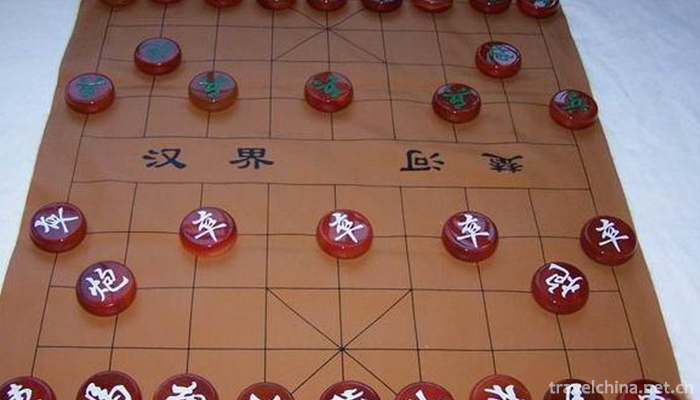
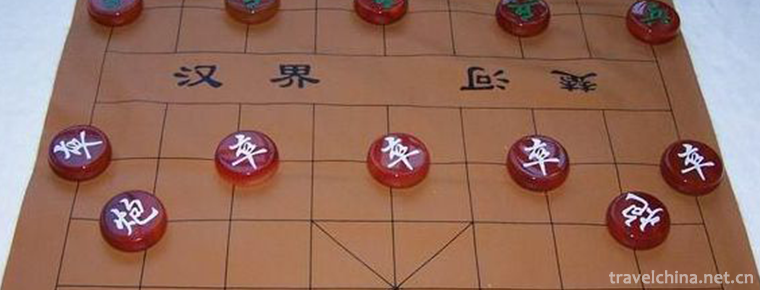
Chess Xiangqi
-
yangshuo west street
West Street is nicknamed Foreigner's Street, located in Yangshuo County,
Views: 153 Time 2018-10-12 -
Zhouzhuang Town
Zhouzhuang Ancient Town is a preferred site for world cultural heritage and the first batch of national 5A tourist attractions. It is located in the southeast of Suzhou City and at the junction of Kun
Views: 357 Time 2018-12-06 -
Tanggu Dagukou Battery Site Museum
Dagukou Battery Site Museum is located on both sides of the Haihe River estuary in the southeast of Tanggu, Tianjin Binhai New Area. It is a national education and youth education
Views: 169 Time 2019-02-13 -
Xiaolangdi Yellow River Three Gorges Scenic Area
The Three Gorges Scenic Area of the Yellow River in Xiaolangdi is a world geological park, a National Water Conservancy Scenic area, the most attractive place in China, ten hot spots in Henan Province
Views: 190 Time 2019-02-25 -
Traditional pasta making techniques
Traditional pasta making technology was listed in the second batch of national intangible cultural heritage list in 2008.
Views: 117 Time 2019-04-20 -
Fuzhou Arts
Fuzhou jiuyi, also known as jingyi, belongs to one of the five traditional local songs in Fujian Province, which mainly focus on singing, and is popular in Fuzhou dialect area
Views: 421 Time 2019-04-29 -
Longyan tea lamp
Longyan tea-picking lamp, also known as tea-picking and butterfly-beating, is a popular folk dance and singing in Longyan city and countryside. It integrates rap, opera and dance into a comprehensive
Views: 228 Time 2019-05-14 -
Leather Paper Making Skills
Leather paper making is an ancient Chinese traditional handicraft. Paper making is one of the four great inventions in ancient China. Bamboo paper and leather paper made from bamboo and tussah bark ar
Views: 103 Time 2019-06-09 -
The first bay of the Yellow River
The first bay of Jiuqu Yellow River is located in Tangke Town, Zoige County, Aba Tibetan and Qiang Autonomous Prefecture, Sichuan Province. It is the junction of Sichuan, Qinghai and Gansu provinces.
Views: 152 Time 2020-11-07 -
The announcer Ding Zhen will not be on duty until half a year later
On December 6, just after yesterday's live media broadcast, Ding Zhen met with more than 20 fans from all over the country to take photos at noon. Ding Zhen is no longer as shy and helpless as he was when he first met a stranger. After half a month's popularity,
Views: 127 Time 2020-12-06 -
The changing style of Cheongsam
After a hundred years of evolution, with the change of people's life style and aesthetic taste, cheongsam has developed a variety of styles, which makes people dazzled. In the golden age of the development of Cheongsam in the 1930s and 1940s, the styles of cheongsam changed
Views: 332 Time 2020-12-11 -
Honor of Neijiang City
On June 9, 2020, it was awarded the advanced municipal Party committee and government of Sichuan Province in promoting the development of service industry.
Views: 319 Time 2020-12-16

